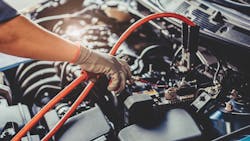Ideal-Diode Controllers Help Boost Battery Input Protection Performance (Download)
Many power systems are required to withstand a short interruption in the supply line or input and continue to function uninterrupted. Yet during maintenance of a car battery or when jump-starting a vehicle, the battery can be connected in reverse polarity during reinstallation and cause damage to the connected subsystems and circuits. This reverse-voltage condition—also known as a reverse-battery condition—occurs when battery terminals or jumper cables are connected backward, usually due to operator error.
When this happens, since automotive batteries are designed to produce the high electrical current required to start the engine, a large current can flow through microcontrollers, dc-dc converters, or other integrated circuits, causing severe damage. As a preventative measure, input reverse-polarity protection and reverse-current blocking features are required.
